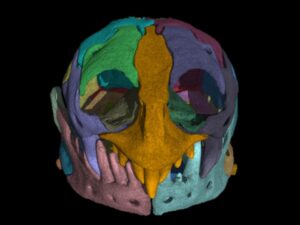2024-02-09 マサチューセッツ工科大学(MIT)
◆超音波を肌に送り込み、内部の臓器から反射し、ステッカーに戻ってくる波のパターンを読み取り、臓器の硬さを測定して追跡します。研究チームは、このステッカーが48時間以上にわたって臓器の硬さを連続してモニターし、病気の進行を示す微妙な変化を検出できることを示しました。
<関連情報>
- https://news.mit.edu/2024/ultrasound-sticker-senses-changing-stiffness-deep-internal-organs-0209
- https://www.science.org/doi/10.1126/sciadv.adk8426
- https://www.science.org/doi/10.1126/science.abo2542
ウェアラブル生体接着型超音波せん断波エラストグラフィ Wearable bioadhesive ultrasound shear wave elastography
HSIAO-CHUAN LIU , YUSHUN ZENG , CHEN GONG , XIAOYU CHEN , […], AND XUANHE ZHAO
Science Advances Published:9 Feb 2024
DOI:https://doi.org/10.1126/sciadv.adk8426

Abstract
Acute liver failure (ALF) is a critical medical condition defined as the rapid development of hepatic dysfunction. Conventional ultrasound elastography cannot continuously monitor liver stiffness over the course of rapidly changing diseases for early detection due to the requirement of a handheld probe. In this study, we introduce wearable bioadhesive ultrasound elastography (BAUS-E), which can generate acoustic radiation force impulse (ARFI) to induce shear waves for the continuous monitoring of modulus changes. BAUS-E contains 128 channels with a compact design with only 24 mm in the azimuth direction for comfortable wearability. We further used BAUS-E to continuously monitor the stiffness of in vivo rat livers with ALF induced by d-galactosamine over 48 hours, and the stiffness change was observed within the first 6 hours. BAUS-E holds promise for clinical applications, particularly in patients after organ transplantation or postoperative care in the intensive care unit (ICU).
多様な臓器の長期連続イメージングを可能にする生体接着超音波 Bioadhesive ultrasound for long-term continuous imaging of diverse organs
CHONGHE WANG , XIAOYU CHEN , LIU WANG , MITSUTOSHI MAKIHATA, […], AND XUANHE ZHAO
Science Published:28 Jul 2022
DOI:https://doi.org/10.1126/science.abo2542

Continuous long-term ultrasound imaging
Ultrasound is widely used for the noninvasive imaging of tissues and organs, but this method requires close contact between the transducer and the target area. This can make it difficult to acquire images over a long period of time, especially if the patient needs to be mobile. Wang et al. describe a wearable ultrasound imaging device (see the Perspective by Tan and Lu). A rigid piezoelectric probe array is bonded to the skin with an acoustically transparent hydrogel elastomer. In vivo testing showed that the device could be comfortably worn for 48 hours, and hooking the array up to a commercially available ultrasound platform allowed for continuous ultrasound images of the carotid artery, lung, and abdomen. —MSL
Abstract
Continuous imaging of internal organs over days could provide crucial information about health and diseases and enable insights into developmental biology. We report a bioadhesive ultrasound (BAUS) device that consists of a thin and rigid ultrasound probe robustly adhered to the skin via a couplant made of a soft, tough, antidehydrating, and bioadhesive hydrogel-elastomer hybrid. The BAUS device provides 48 hours of continuous imaging of diverse internal organs, including blood vessels, muscle, heart, gastrointestinal tract, diaphragm, and lung. The BAUS device could enable diagnostic and monitoring tools for various diseases.


